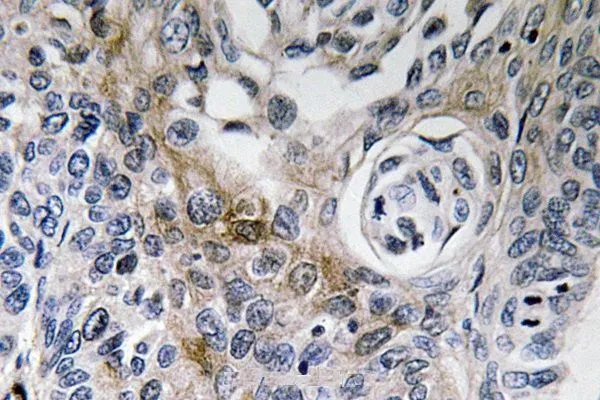
Immunohistochemistry (IHC) analyzes of CD63 pAb in paraffin-embedded human lung carcinoma tissue.
CD63 antibody
GTX17441
ApplicationsWestern Blot, ImmunoHistoChemistry, ImmunoHistoChemistry Paraffin
Product group Antibodies
ReactivityHuman, Mouse, Rat
TargetCD63
Overview
- SupplierGeneTex
- Product NameCD63 antibody
- Delivery Days Customer9
- Application Supplier NoteWB: 1:500 - 1:2000, IHC: 1:50 - 1:200
- ApplicationsWestern Blot, ImmunoHistoChemistry, ImmunoHistoChemistry Paraffin
- CertificationResearch Use Only
- ClonalityPolyclonal
- Concentration1 mg/ml
- ConjugateUnconjugated
- Gene ID967
- Target nameCD63
- Target descriptionCD63 molecule
- Target synonymsAD1, HOP-26, ME491, MLA1, OMA81H, Pltgp40, TSPAN30, CD63 antigen, AD1 antigen, CD63 antigen (melanoma 1 antigen), granulophysin, limp1, melanoma-associated antigen ME491, melanoma-associated antigen MLA1, ocular melanoma-associated antigen, tetraspanin-30, tspan-30
- HostRabbit
- IsotypeIgG
- Protein IDP08962
- Protein NameCD63 antigen
- Scientific DescriptionThe protein encoded by this gene is a member of the transmembrane 4 superfamily, also known as the tetraspanin family. Most of these members are cell-surface proteins that are characterized by the presence of four hydrophobic domains. The proteins mediate signal transduction events that play a role in the regulation of cell development, activation, growth and motility. The encoded protein is a cell surface glycoprotein that is known to complex with integrins. It may function as a blood platelet activation marker. Deficiency of this protein is associated with Hermansky-Pudlak syndrome. Also this gene has been associated with tumor progression. Alternative splicing results in multiple transcript variants encoding different protein isoforms. [provided by RefSeq, Apr 2012]
- ReactivityHuman, Mouse, Rat
- Storage Instruction-20°C or -80°C,2°C to 8°C
- UNSPSC12352203
References
- Lin Z, Shibuya Y, Imai Y, et al. Therapeutic Potential of Adipose-Derived Stem Cell-Conditioned Medium and Extracellular Vesicles in an In Vitro Radiation-Induced Skin Injury Model. Int J Mol Sci. 2023,24(24). doi: 10.3390/ijms242417214Read this paper
- Lin A, He W. LINC01705 derived from adipocyte exosomes regulates hepatocyte lipid accumulation via an miR-552-3p/LXR axis. J Diabetes Investig. 2023,14(10):1160-1171. doi: 10.1111/jdi.14050Read this paper
- Yang YH, Wen CS, Kuo YL, et al. GuiLu-ErXian Glue extract promotes mesenchymal stem cells (MSC)-Induced chondrogenesis via exosomes release and delays aging in the MSC senescence process. J Ethnopharmacol. 2023,317:116784. doi: 10.1016/j.jep.2023.116784Read this paper
- Wakao S, Oguma Y, Kushida Y, et al. Phagocytosing differentiated cell-fragments is a novel mechanism for controlling somatic stem cell differentiation within a short time frame. Cell Mol Life Sci. 2022,79(11):542. doi: 10.1007/s00018-022-04555-0Read this paper
- Gao G, Wang L, Li C. Circ_0006790 carried by bone marrow mesenchymal stem cell-derived exosomes regulates S100A11 DNA methylation through binding to CBX7 in pancreatic ductal adenocarcinoma. Am J Cancer Res. 2022,12(5):1934-1959.Read this paper
- Fan H, Chen Z, Tang HB, et al. Exosomes derived from olfactory ensheathing cells provided neuroprotection for spinal cord injury by switching the phenotype of macrophages/microglia. Bioeng Transl Med. 2022,7(2):e10287. doi: 10.1002/btm2.10287Read this paper
- Matejovič A, Wakao S, Kitada M, et al. Comparison of separation methods for tissue-derived extracellular vesicles in the liver, heart, and skeletal muscle. FEBS Open Bio. 2021,11(2):482-493. doi: 10.1002/2211-5463.13075Read this paper
- Liu YM, Chen HC, Chen YC, et al. miR-1975 serves as an indicator of clinical severity upon influenza infection. Eur J Clin Microbiol Infect Dis. 2021,40(1):141-149. doi: 10.1007/s10096-020-04008-1Read this paper
- Liu YM, Tseng CH, Chen YC, et al. Exosome-delivered and Y RNA-derived small RNA suppresses influenza virus replication. J Biomed Sci. 2019,26(1):58. doi: 10.1186/s12929-019-0553-6Read this paper
- Lee HY, Chen CK, Ho CM, et al. EIF3C-enhanced exosome secretion promotes angiogenesis and tumorigenesis of human hepatocellular carcinoma. Oncotarget. 2018,9(17):13193-13205. doi: 10.18632/oncotarget.24149Read this paper

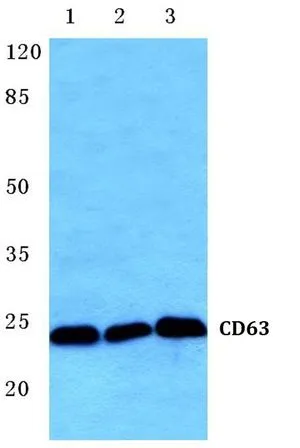
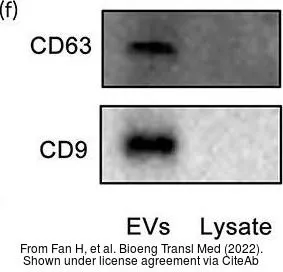
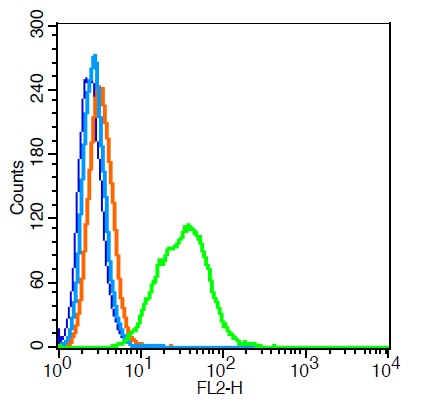

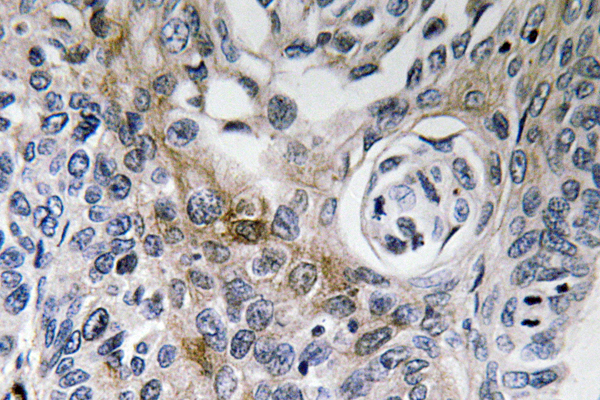

![FACS analysis of peripheral blood lymphocytes from a patient with allergy to bee venom after stimulation with bee venom using GTX18235 CD63 antibody [MEM-259] (FITC).](https://www.genetex.com/upload/website/prouct_img/normal/GTX18235/GTX18235_20191025_AP_006_134_w_23060620_554.webp)
![FACS analysis of IgE-activated peripheral blood using GTX18236 CD63 antibody [MEM-259] (PE).](https://www.genetex.com/upload/website/prouct_img/normal/GTX18236/GTX18236_20191025_AP_006_135_w_23060620_482.webp)